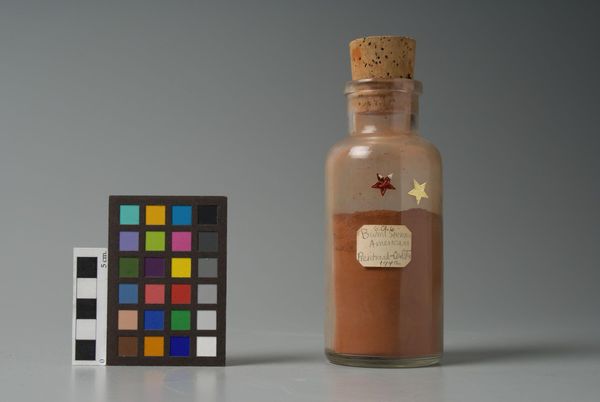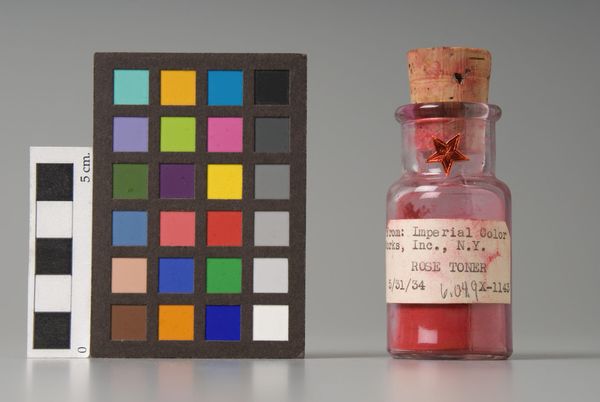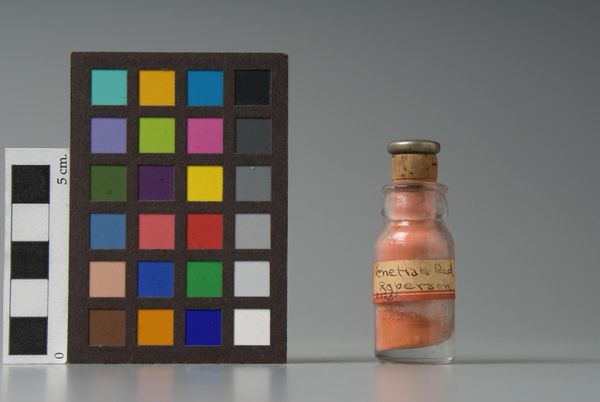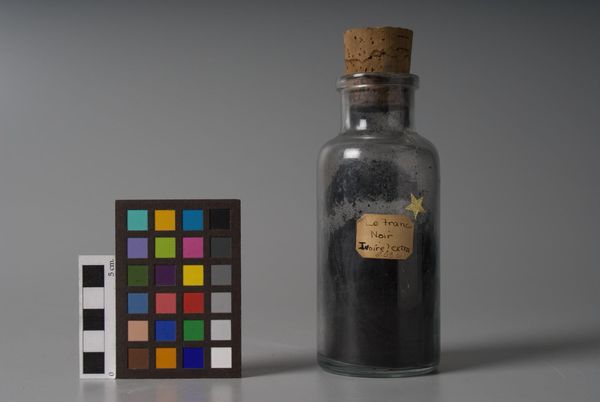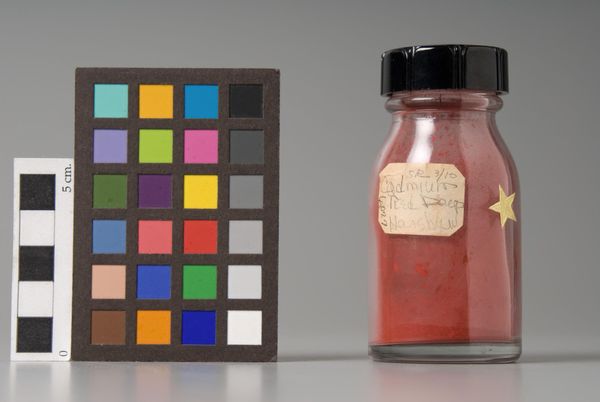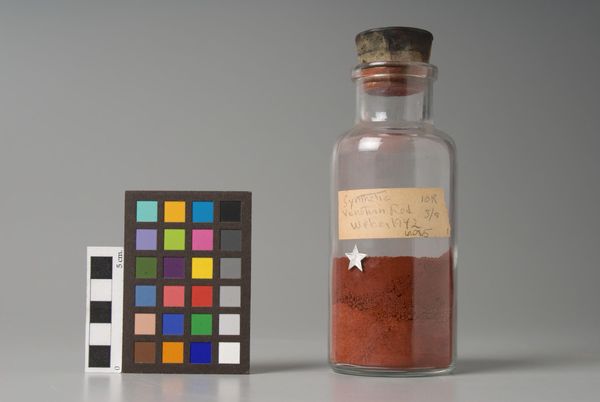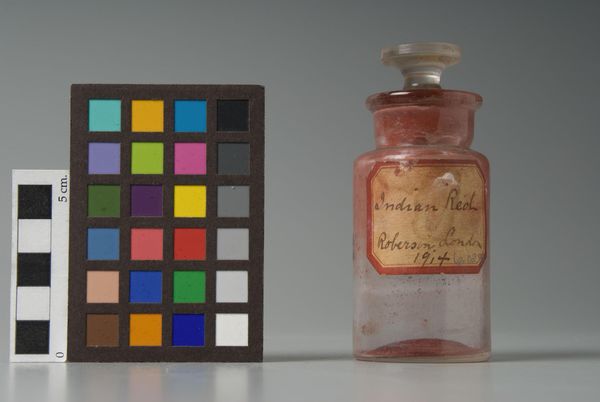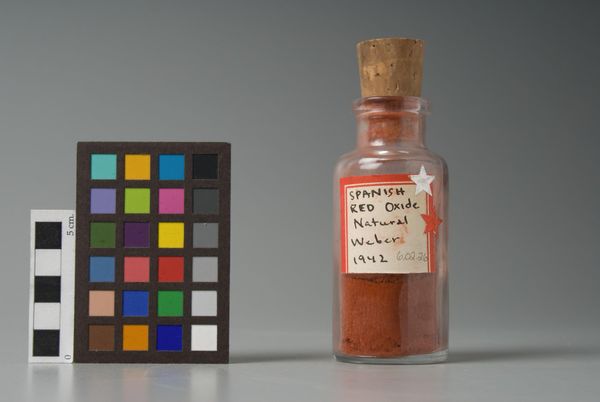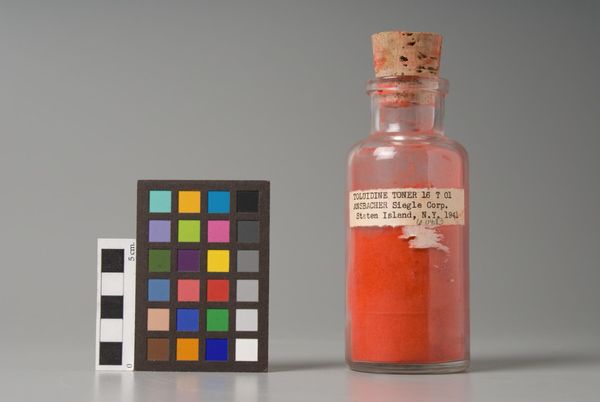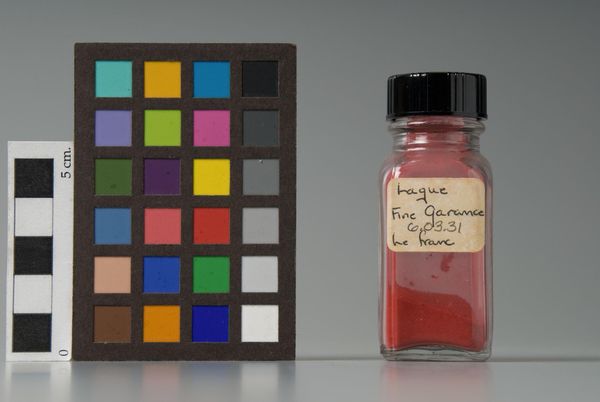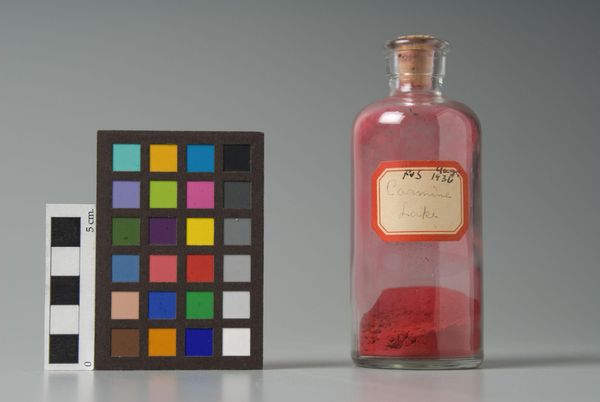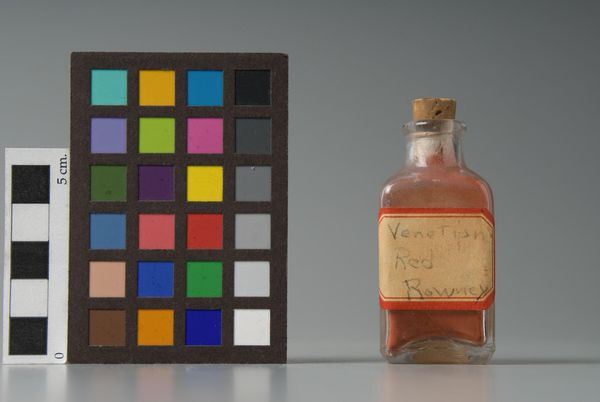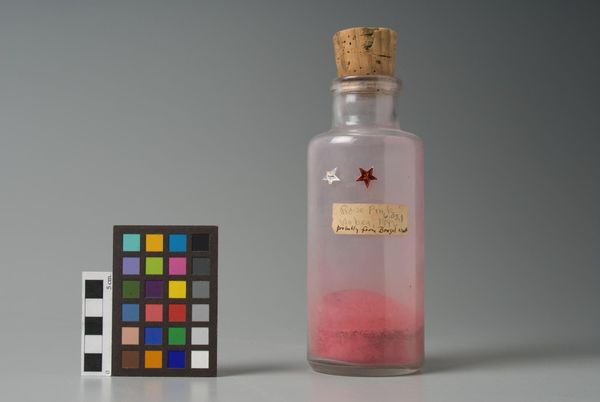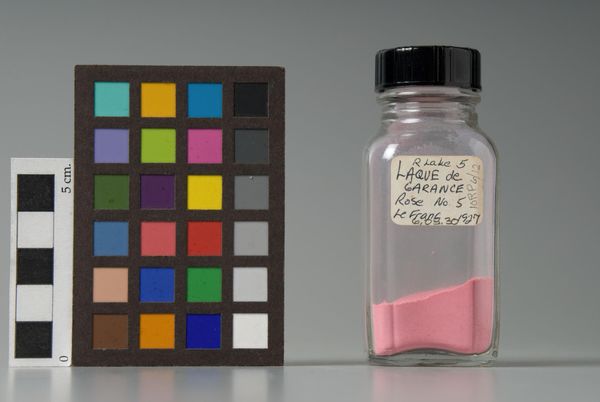
Copyright: CC0 1.0
Curator: Here we have “Rosso Inglese,” made by Antonio Buonamici in Florence, 1923. Editor: Well, it's quite a muted presentation, isn't it? Almost clinical, with those stark color swatches alongside the dusty rose pigment in the bottle. Curator: Indeed. Buonamici was a color merchant, and these pigments played a critical role in the Florentine art scene. Think of the countless paintings made with this very “English Red.” Editor: The visual weight of the color grid beside the glass bottle creates a structured contrast, a formal assessment of the red’s tone, hue, and saturation. Curator: And consider the historical weight. “Rosso Inglese” connects us to the material realities of Renaissance workshops and the global trade networks that supplied them. Editor: It's interesting to see color deconstructed in such a way, almost reduced to pure information and placed alongside a very physical object. Curator: It highlights the intersection of commerce, art, and history right before our eyes. Editor: Absolutely, and it's a powerful reminder that art begins with such humble, tangible materials.
Comments
No comments
Be the first to comment and join the conversation on the ultimate creative platform.
